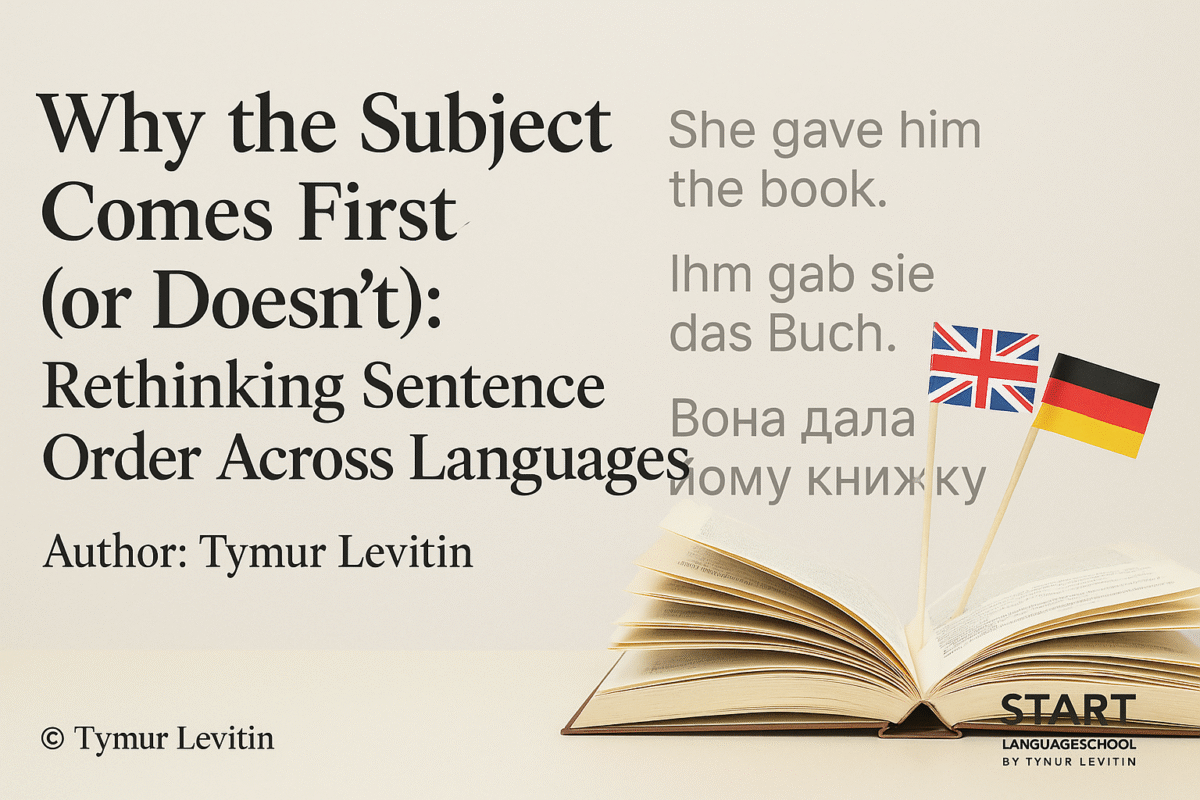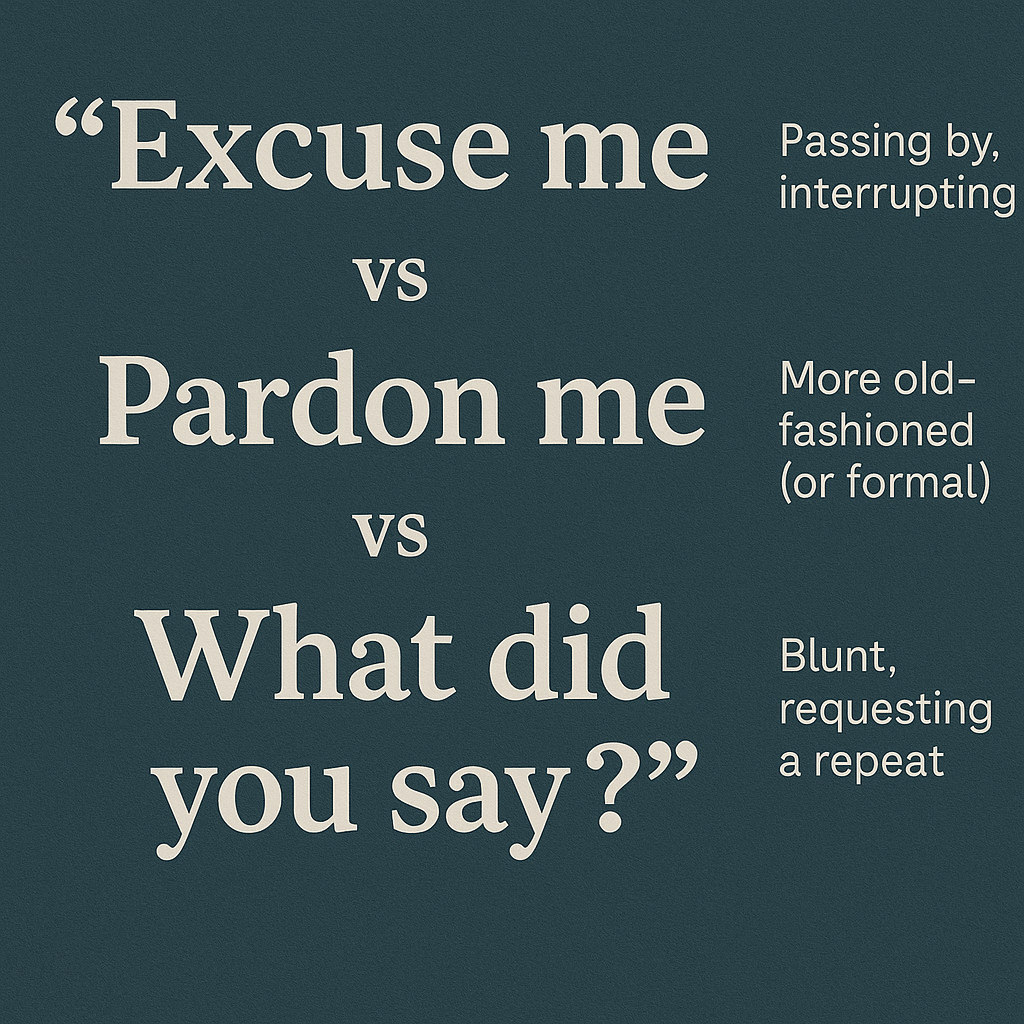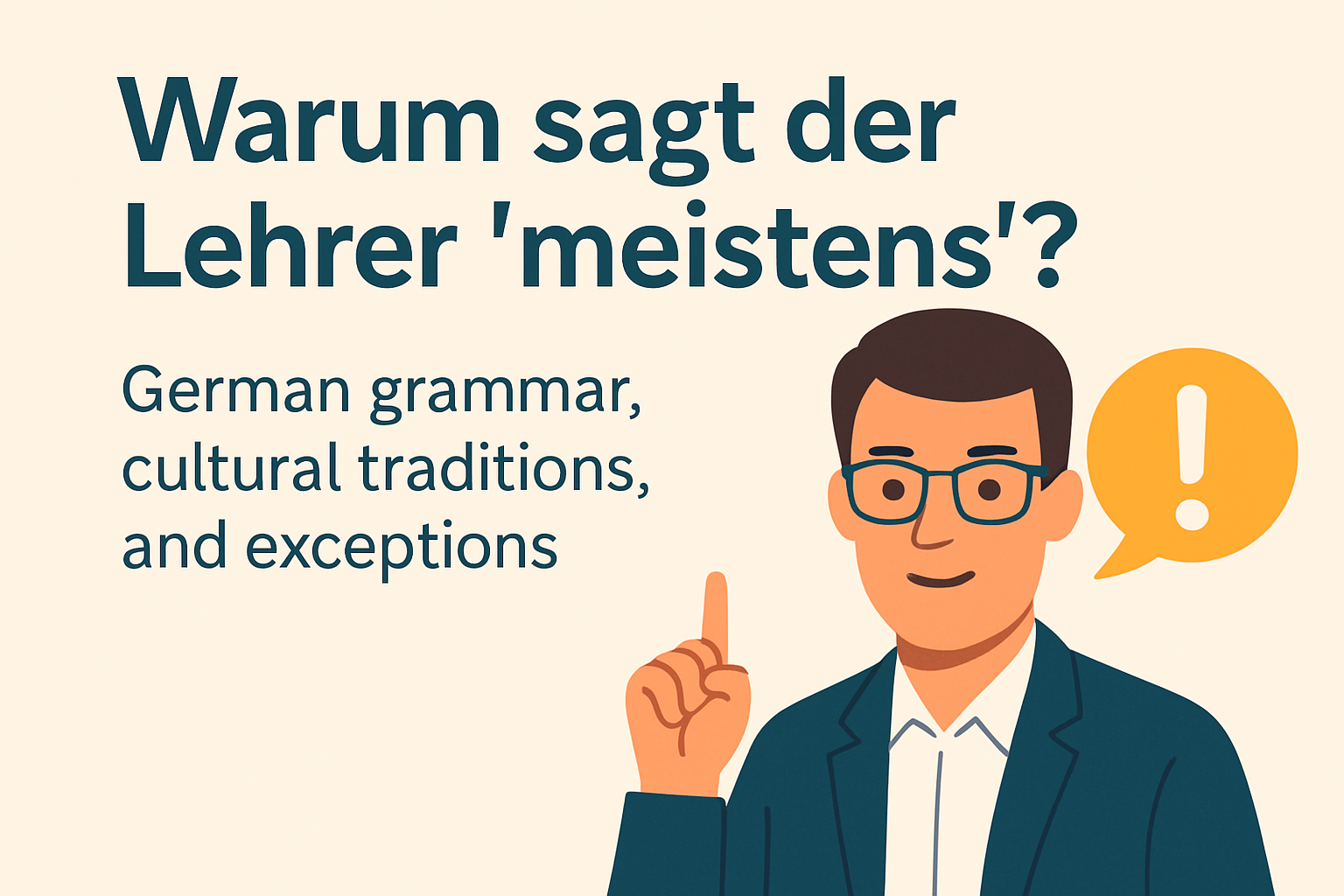👉 选择语言
在 开始语言学校》,作者 Tymur Levitin, we teach our students to think in full sentences, not fragments — and that means understanding not just what to say, but how to structure it.
Many language learners struggle with word order, especially when switching between languages like English, German, and Ukrainian. A simple sentence like “She gave him the book” seems straightforward — but why does “she” come first? And is that always the case?
Let’s explore the logic behind sentence structure across languages — and why subject–verb–object (SVO) is not always the most important rule to follow.
🧠 What Is a “Subject,” Really?
In English, we’re taught to always start with the subject:
“He is reading a book.”
→ Subject – Verb – Object
But is this just a grammar rule — or a reflection of how we see the world?
The subject is usually the agent of the action — the one doing something. But in languages like 德国, the position of the subject can change:
“Das Buch liest er gerade.”
→ The book is being read by him now — the subject comes last, for emphasis.
In 乌克兰, word order is flexible due to case endings:
“Книгу читає він.”
(The book is being read by him.)
These shifts are not random. They reflect how different languages prioritize information. English likes clarity and order. German uses structure and emphasis. Ukrainian expresses rhythm and meaning through case, not position.
🔄 When the Verb Comes First
Sometimes, the subject disappears completely:
“It’s raining.” (What is “it”?)
“Here comes the sun.”
In questions, the verb often comes before the subject:
“Did you sleep well?”
In commands, there’s no subject at all:
“Close the door.”
This shows that sentence structure is driven by function, not just grammar rules. The subject comes first — unless something else needs to.
💬 Sentence = Message Flow
Native speakers don’t build sentences by memorizing rules. They follow the flow of information:
- What’s already known?
- What’s new or important?
- What needs emphasis?
That’s why we teach our students to ask:
- Who is doing what?
- What do I want to emphasize?
- How does this sentence feel?
In English, the default order is SVO, but real conversation often breaks this rule for style, tone, or emphasis.
🌍 Comparing Across Languages
Let’s look at a few examples:
| Language | Sentence | Meaning / Structure |
|---|---|---|
| 英语 | She gave him the book. | Subject – Verb – Indirect – Direct |
| 德国 | Ihm gab sie das Buch. | Indirect – Verb – Subject – Direct |
| 乌克兰 | Вона дала йому книжку. | Subject – Verb – Indirect – Direct |
| 德国 | Das Buch gab sie ihm. | Direct – Verb – Subject – Indirect |
"(《世界人权宣言》) same message, different structure — depending on emphasis, rhythm, and logic.
🧑🏫 Why This Matters for Language Learners
Most language learners struggle not because the grammar is hard — but because they try to apply the rules of their native language to a new one.
At our school, we help students:
- See patterns in sentence structure
- Recognize meaning flow instead of strict formulas
- Switch thinking from “rules” to intention
That’s how real communication happens — not from rules, but from understanding.
✨ Learn with teachers who live the language
在 开始语言学校》,作者 Tymur Levitin, our teachers are not just tutors — they are translators, linguists, and professionals who understand structure and meaning.
We work with students who speak 20+ different native languages — and we help them speak English, German, Ukrainian and others fluently and logically, even if they don’t share a common mother tongue with us.
🔗 Related articles you might enjoy:
🎓 Explore our language programs:
📚 Rubric: Author’s Column by Tymur Levitin
🖋️ 作者: Tymur Levitin — founder, director, and senior teacher at Start Language School by Tymur Levitin (Levitin Language School)
© Tymur Levitin






















